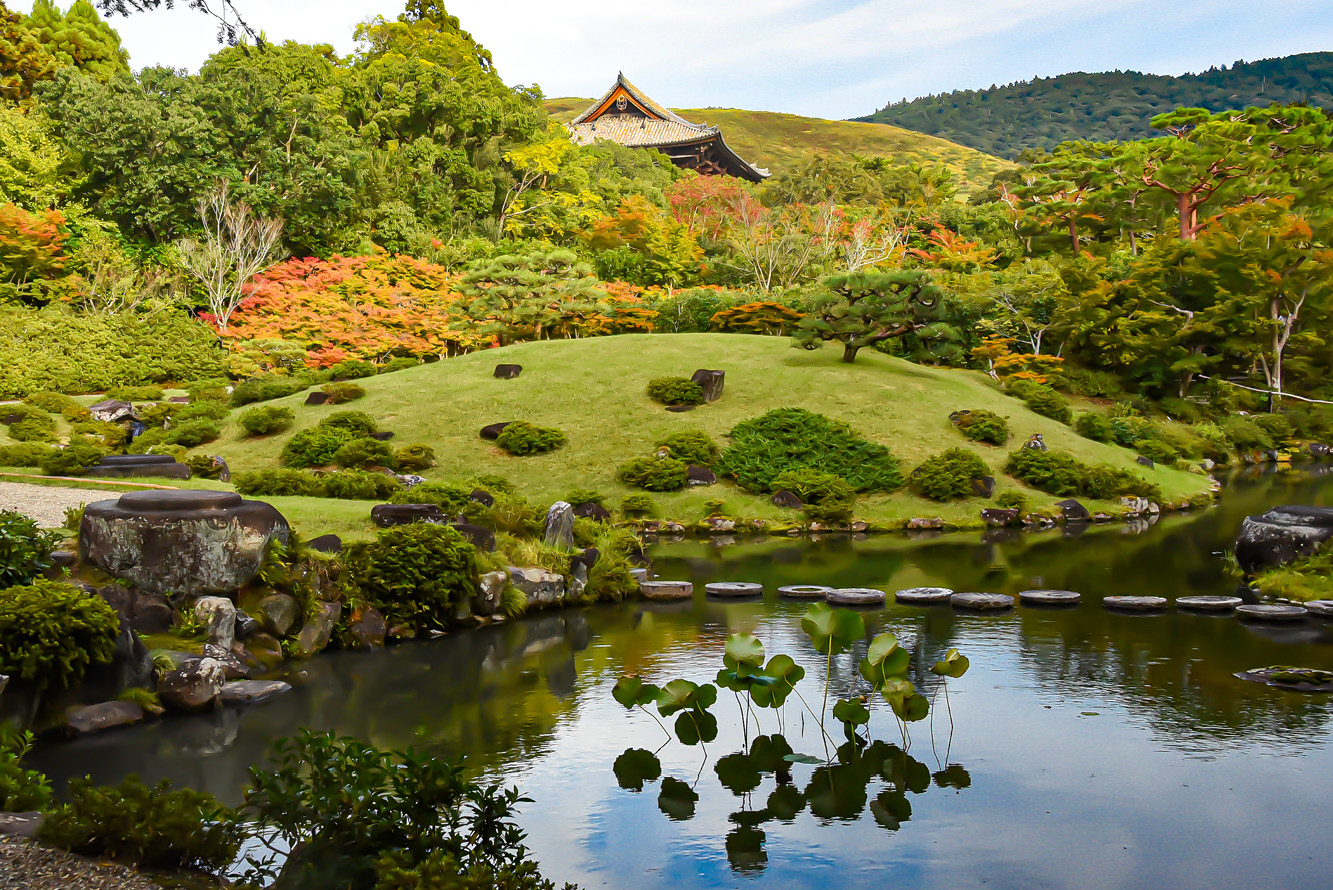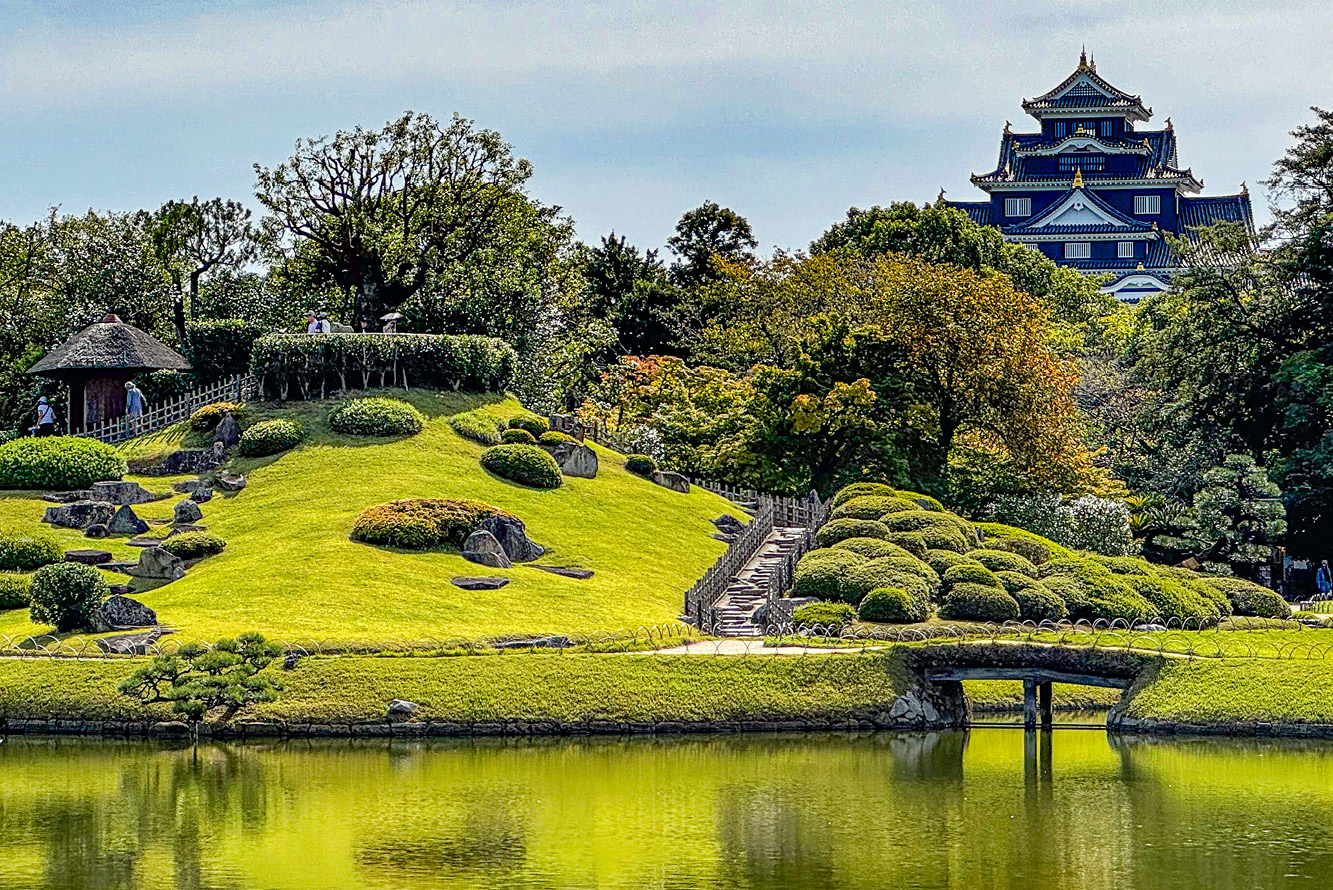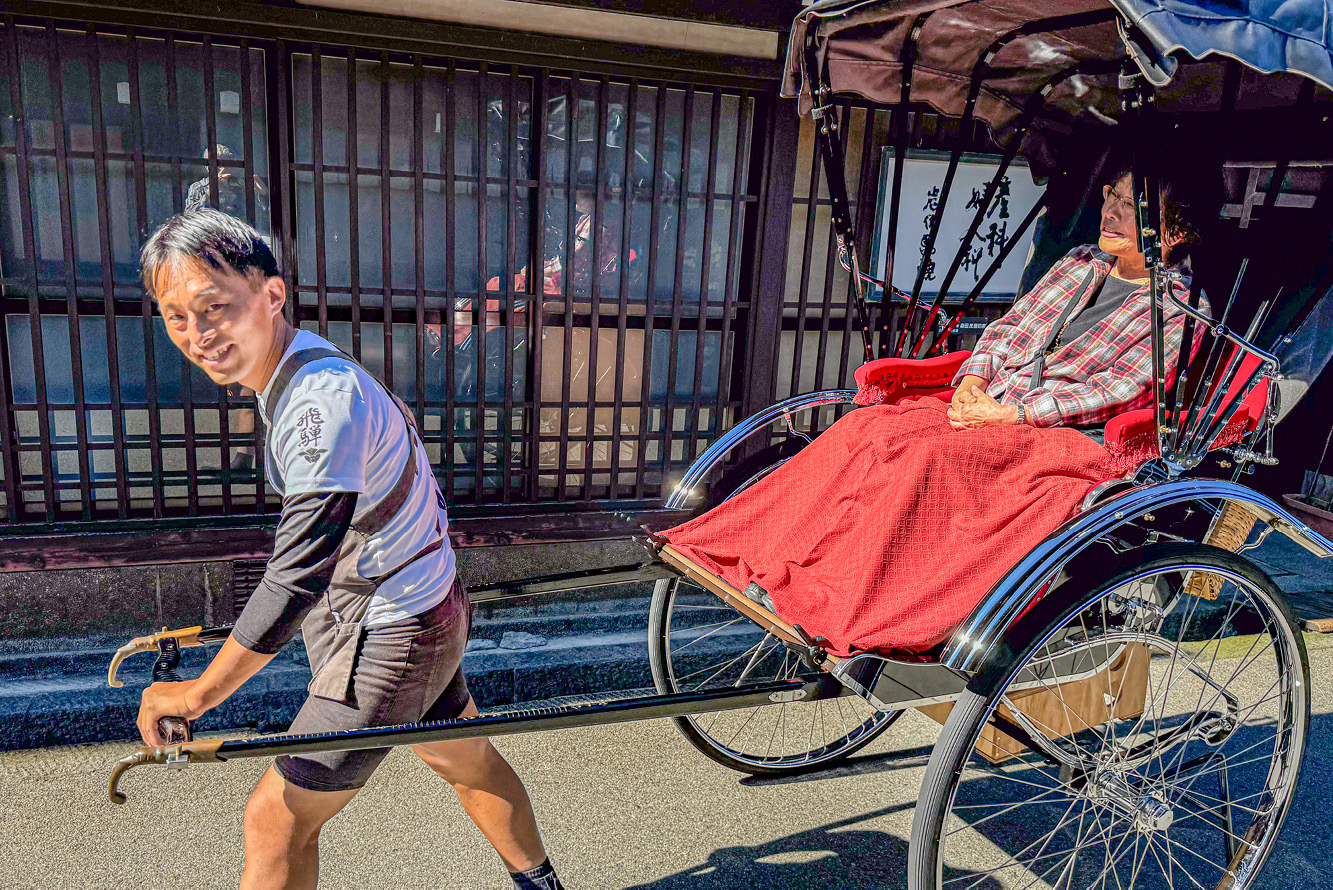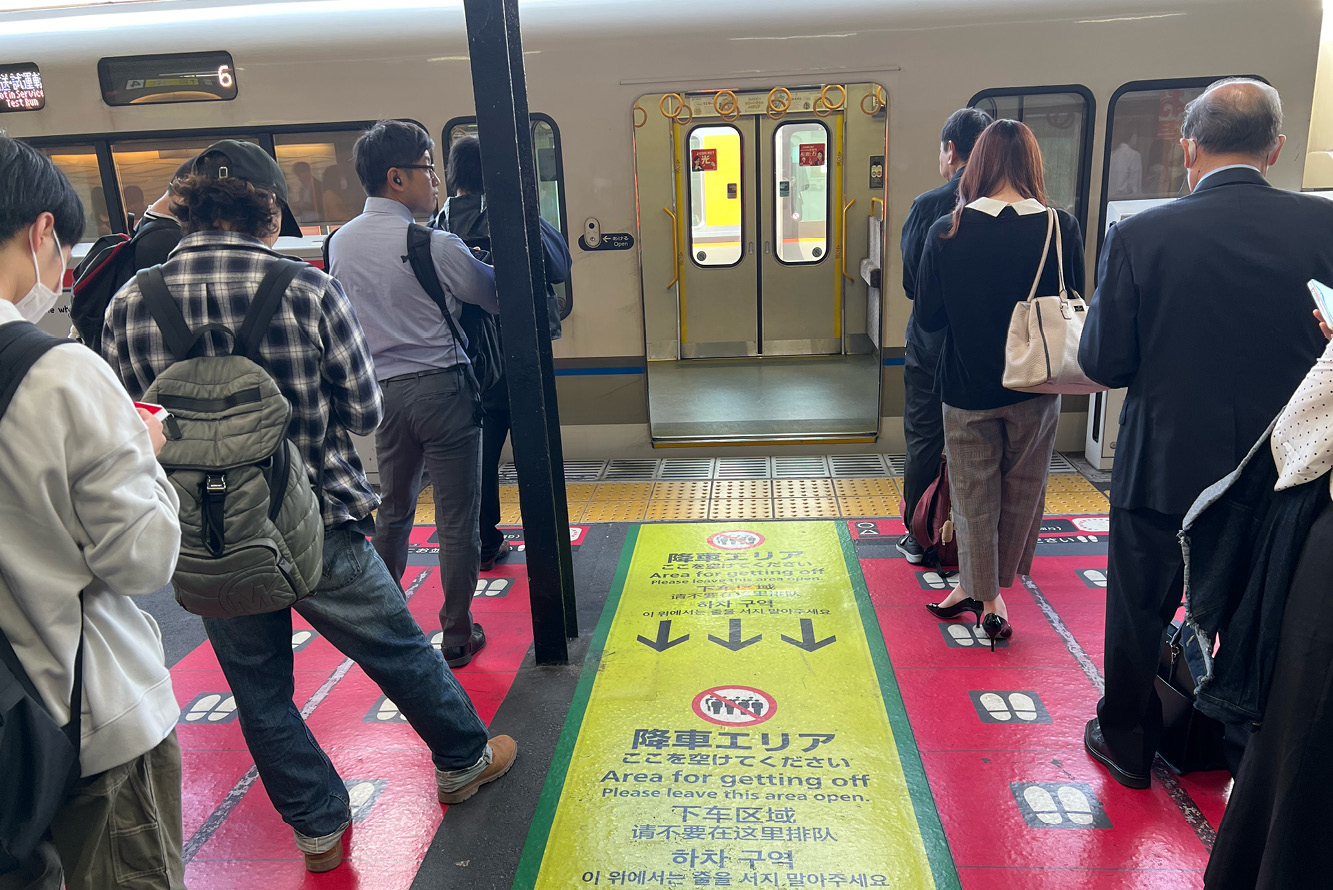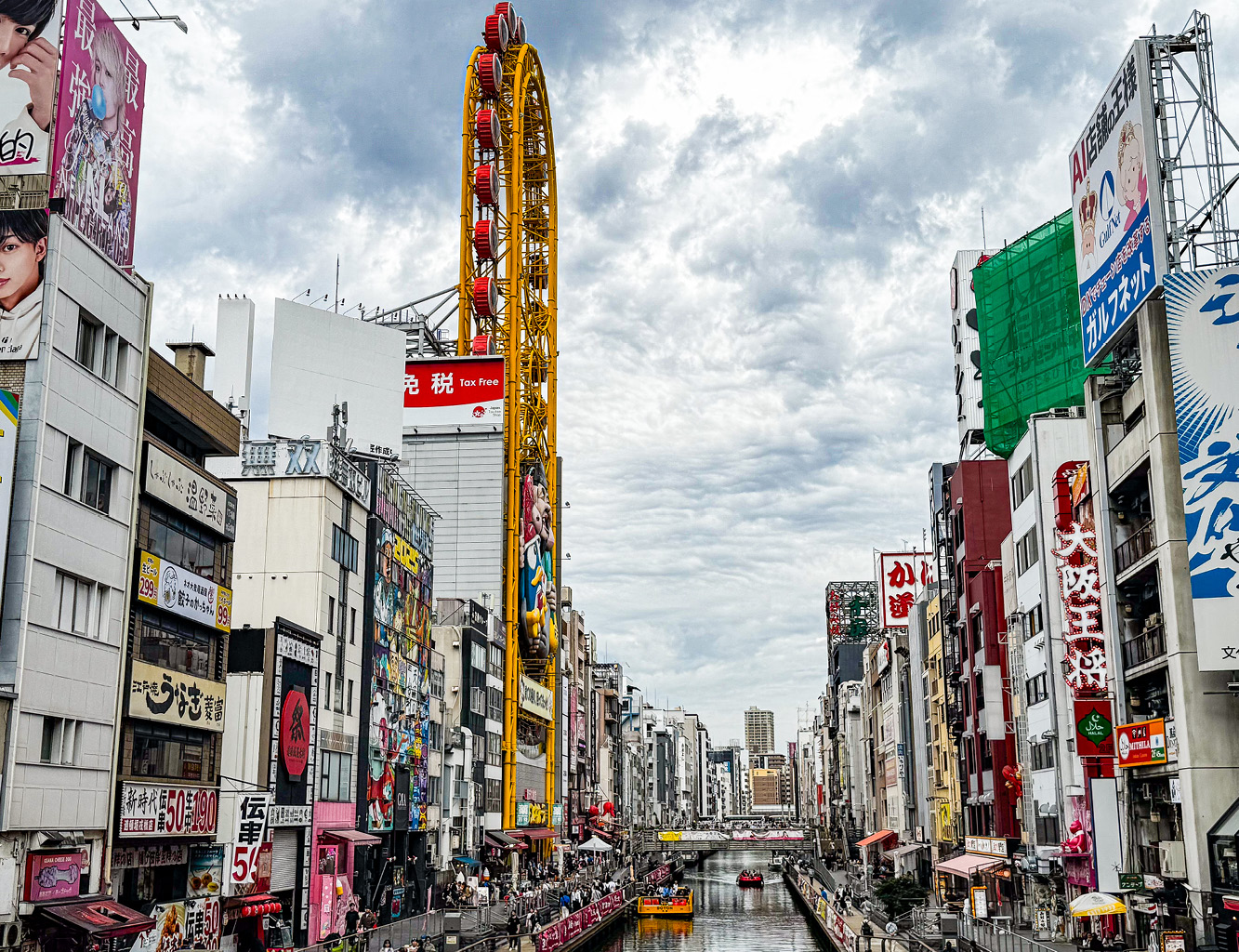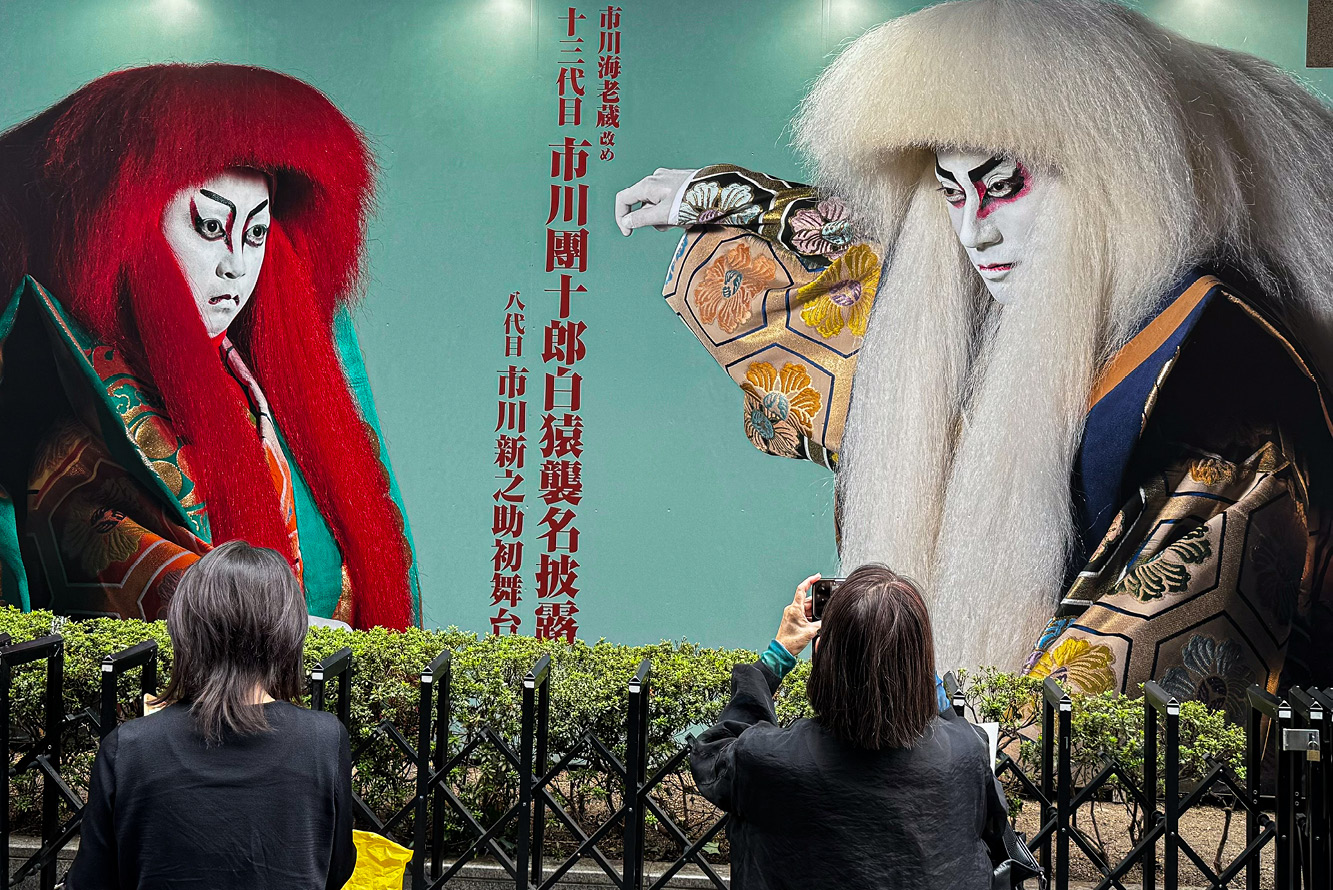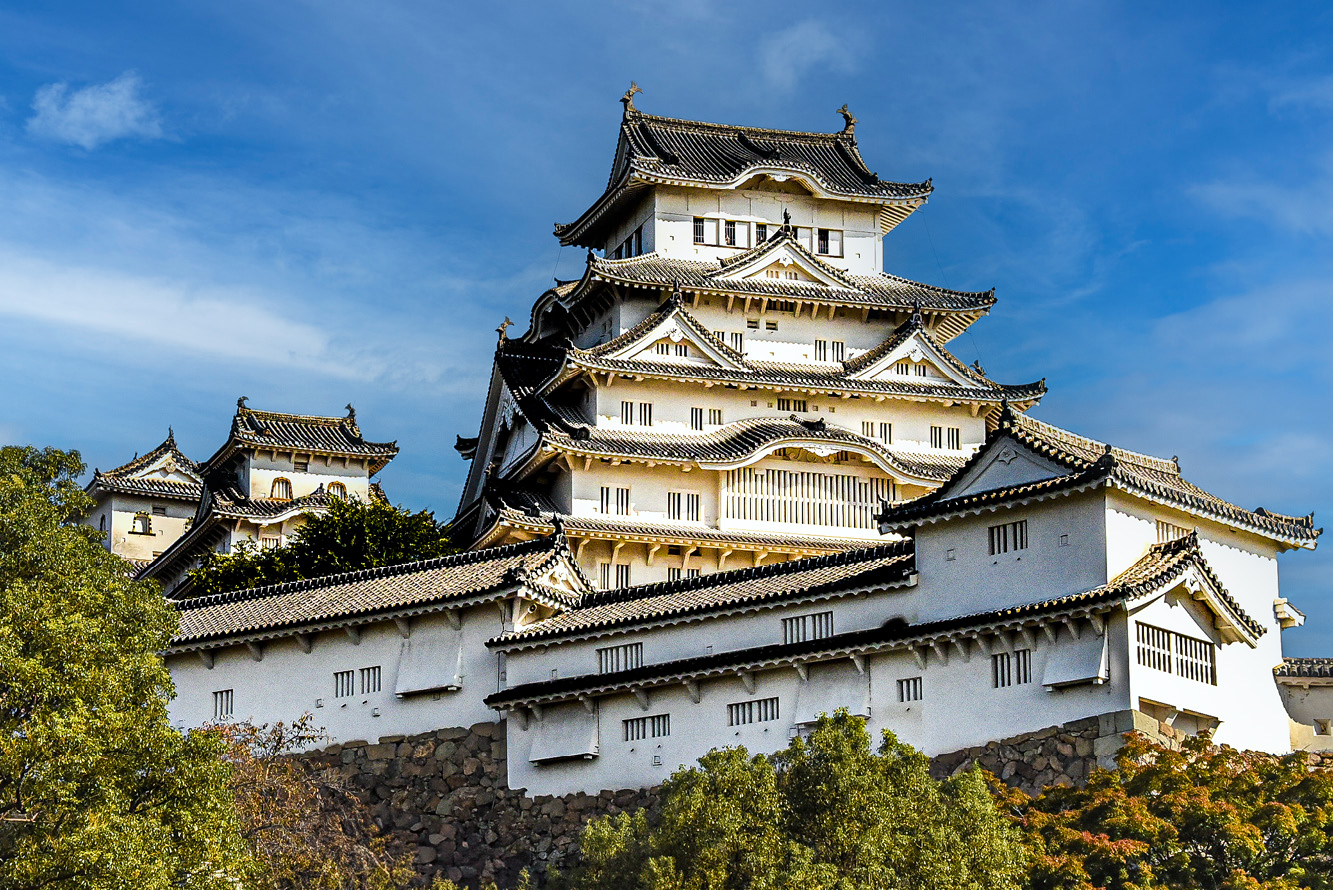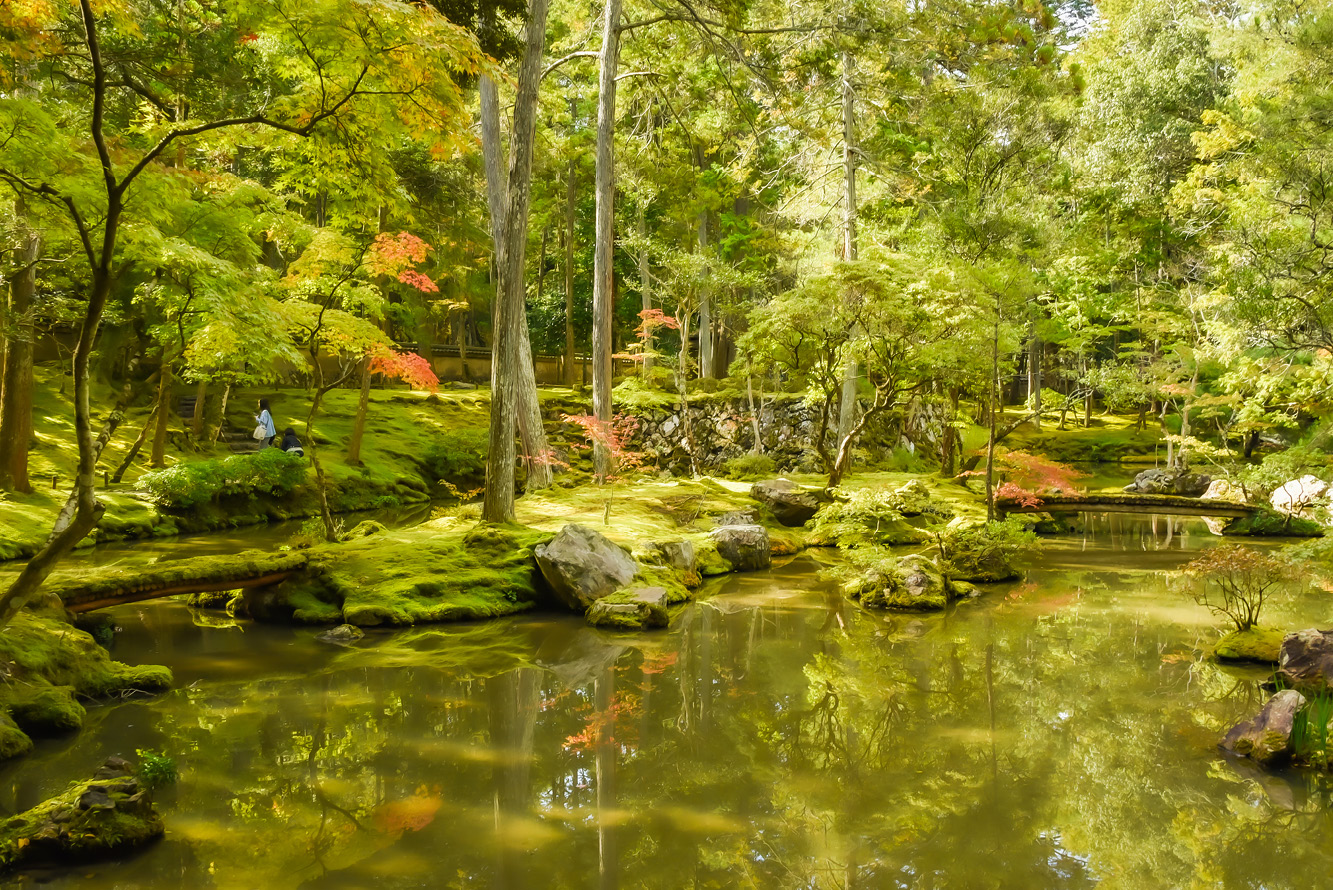KONNICHIWA!
A three-week dive into the wonders of the Land of the Rising Sun–– Japan––introduced me to a society steeped in rich tradition, yet at the forefront in twenty-first century modernity. Japan’s bounteous treasures saturated our senses as soon after we deplaned following the fourteen-hour ride over the top of the planet from New York’s JFK International Airport to Tokyo’s Haneda International Airport.
Walking more than we ever have on any travel adventure (a hallmark of typical Japan itineraries, it seems), we marveled at its modern cities; magnificent, ancient temples and shrines; stunning artfully designed gardens; efficiently-run systems for daily living; and its welcoming people.
Lights dazzle in nighttime Osaka
I found Japan both familiar and foreign. Its large cities, besides Kyoto, were rebuilt after WWII, when heavy Allied bombing destroyed them. Tokyo and Osaka have that familiar, big city feel. Urbanites dress like we do, although with a bit more sophistication and style. As a gardener, I recognized many of the plants in gardens and natural landscapes, since hundreds of varieties we grow in the northern half of the U.S. come from Japan, China, and Korea.
Japan’s natural landscape surprised me. Minutes outside the megalopolis of seaside Tokyo on the shinkansen (bullet train), mountains begin to fill the horizon. Supposedly Mount Fuji is visible on the bullet train from the capital heading south, but the famously bashful peak hid behind a vail of clouds. Yet we climbed the “Japanese Alps” on a few other occasions on single track trains, cable cars, and funiculars to reach our accommodations and explore the country’s natural gifts.
We timed our visit to catch fall’s renowned tapestry of brilliant colors (almost as popular as spring’s cherry blossom time), but global warming has pushed back that peak period to the third week in November. We caught the early days of leaf-peeping season, as some Japanese maples blushed with their reds and bronzes, and gingko trees hinted at their eye-popping yellow autumn glow.
I was impressed with Japan’s culture
Although a 23-day immersion barely scratches the surface of this richly layered society, several impressive cultural aspects come to mind when my friends and colleagues ask me, “So how did you like Japan?” Here’s what pops into my head.
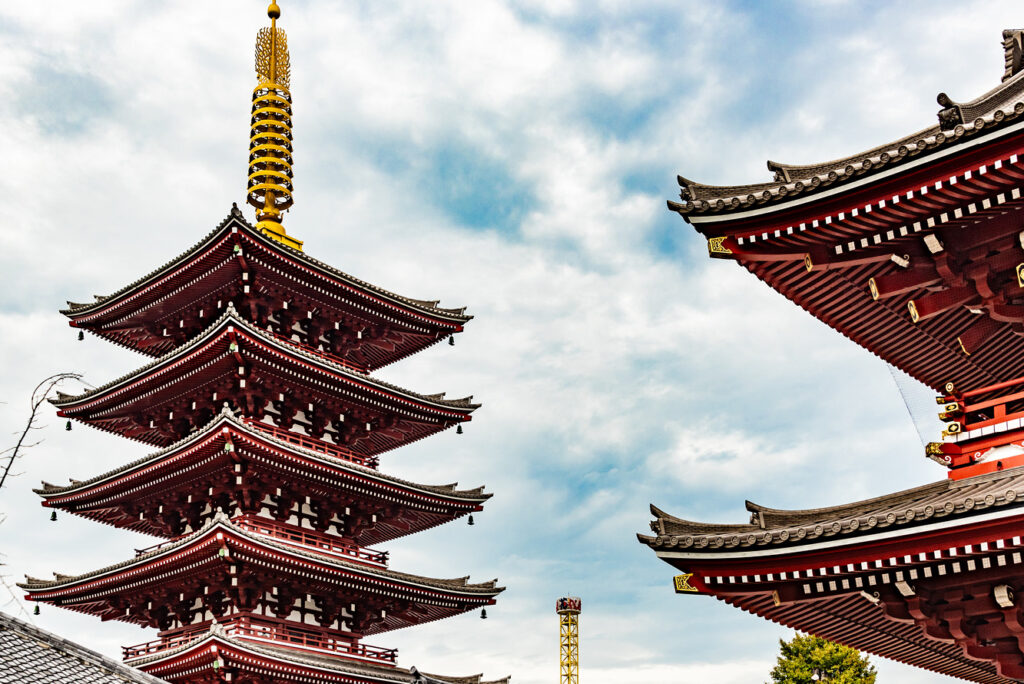
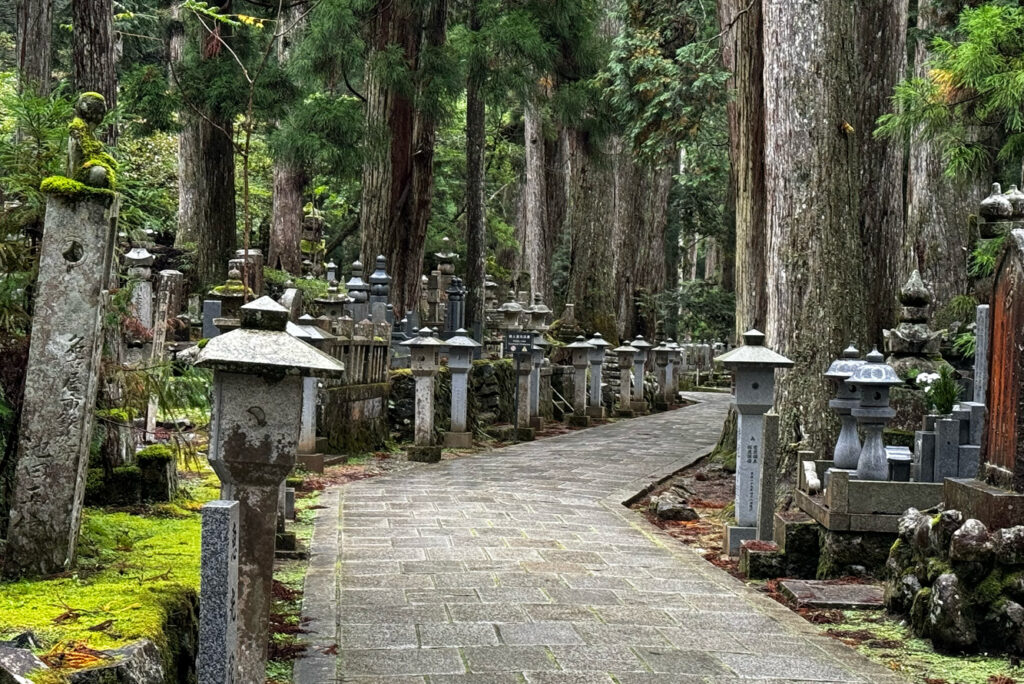
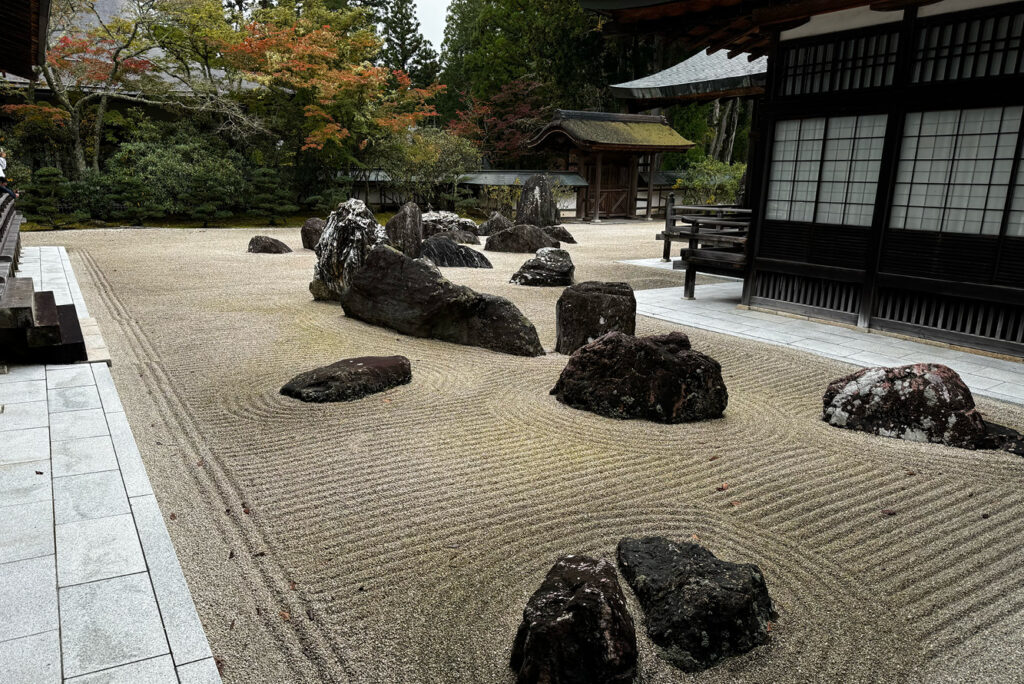
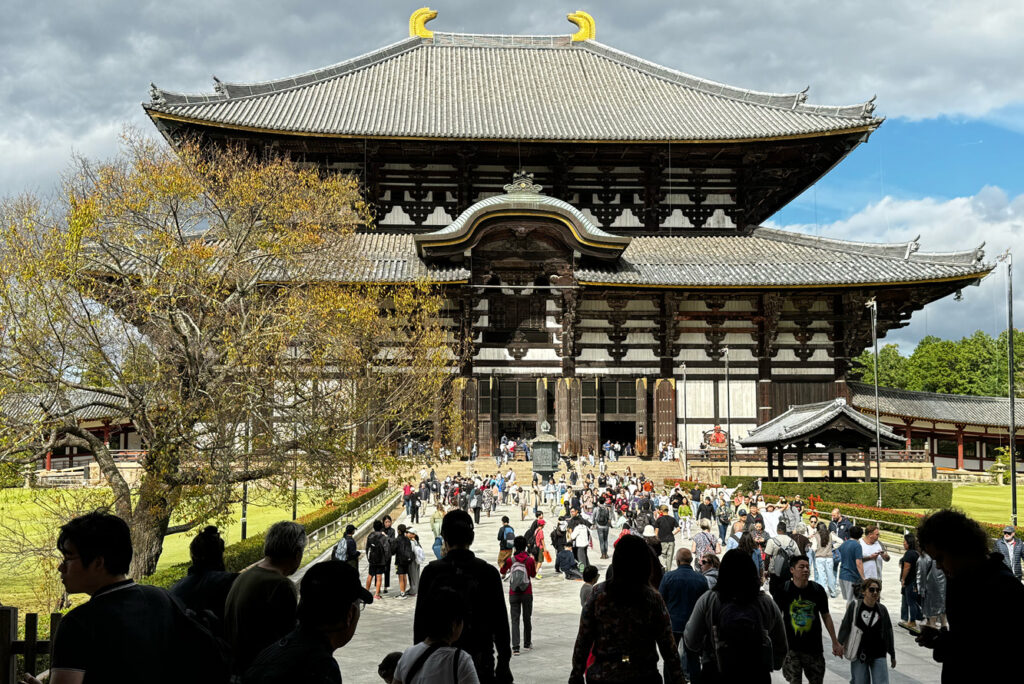
Japanese people exhibit a reverent and respectful disposition centered on a strong sense of community and the spirits of the natural world.
Japan’s two major religions foster this life approach. The country’s ancient indigenous religion, Shintoism, is a polytheistic belief system that reveres the natural world where sacred spirits reside. Shingon Buddhism, the country’s other major religion, stresses enlightenment for oneself and all of society through personal ritualized meditative practice. Shinto shrines and Buddhist temples inspire awe, as the 50-foot-tall bronze Buddha does at the UNESCO World Heritage Tōdai-ji Temple in Nara.
The culture’s strong sense of community developed during a period of self-imposed isolation––1600 to 1868––from the outside world during the last centuries of shogun control. Rulers kept foreigners out, and travel by Japanese outside the country was practically forbidden. During this relatively peaceful period, the economy, the arts, and education flourished. Called the Edo period, it ended when the emperor’s forces overthrew shogunate rule and opened Japan up to mostly Western foreign trade and influences to modernize the country.
The Japanese welcome visitors.
It may be one of the reasons the country is the world’s most popular travel destination right now. In 2023, Japan experienced 25 million visitors.) Locals extended themselves many times to help us along our journey.
Standing with our confused expressions, not sure if we were on the right train platform, a young woman approached us and asked if she could help. We showed her our tickets, and she took them away to find the stationmaster. Did we make a foolish mistake giving her our tickets? A few minutes later, she returned and gave us specific instructions on where to stand, what trains to catch and when to get off and transfer to another train. And she stood near us to make sure we took the first train correctly!
Another time, we asked a young man how to find a restaurant we identified on our phone. Although he spoke English, he still walked a block with us to take us to the restaurant’s front door.
Japan has enviable organized and efficient systems for daily living.
The chief way of getting around Japan, besides by foot, is riding trains, buses, and subways. Travelers hail Japan’s extensive transportation system for a very good reason––it’s incredibly efficient. You can set your iWatch to arrivals and departures. And what about those sleek shinkansens, topping out at 199 miles per hour?
On station platforms, solid barriers prevent falling mishaps, and they’re punctuated with numbered sliding gates that line up perfectly with the doors of numbered train cars when they arrive. In front of the gates, people ready to board queue up on two rows painted red with outlined footprints, separated by a yellow row marking where passengers exit between those waiting to board. Everyone follows the rules! Once moving, train cars are quiet.
Japan really is clean and tidy! No trash, graffiti, or abandoned orange traffic cones in the streets.
Japanese frown on eating while walking. No “to-go” food consumed when moving around, no big soda cups thrown down, no candy wrappers slipping out of one’s hand––Japanese customs expect this behavior. And looking for a trash can is frustrating. They are scarce, except near transportation depots. On the occasions when I had trash, I stuffed the wrapper in my pocket until I found a bin.
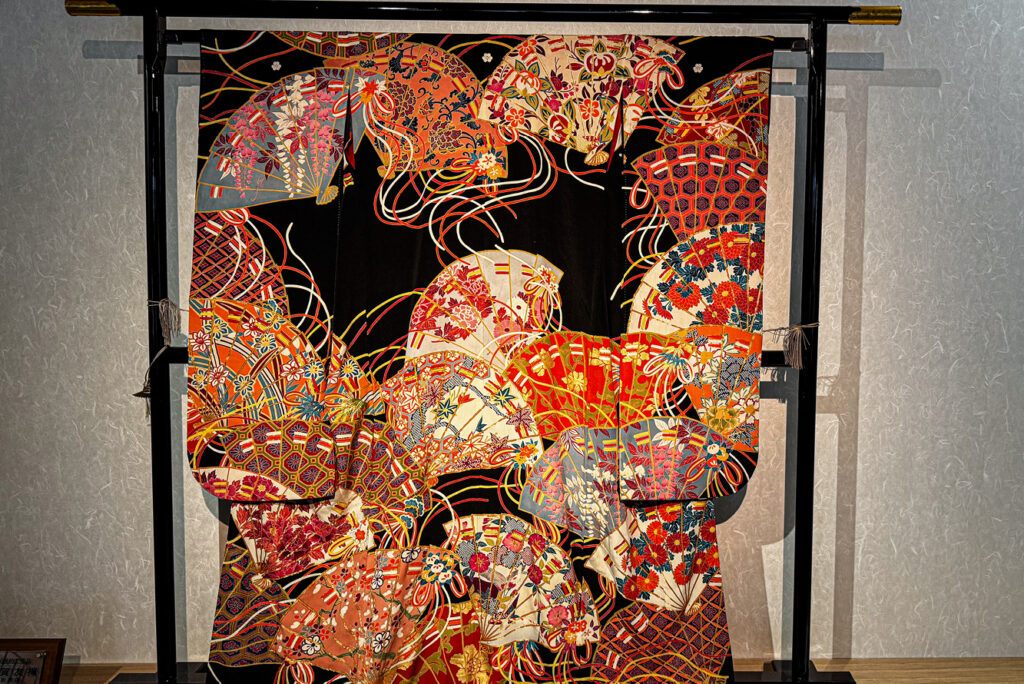
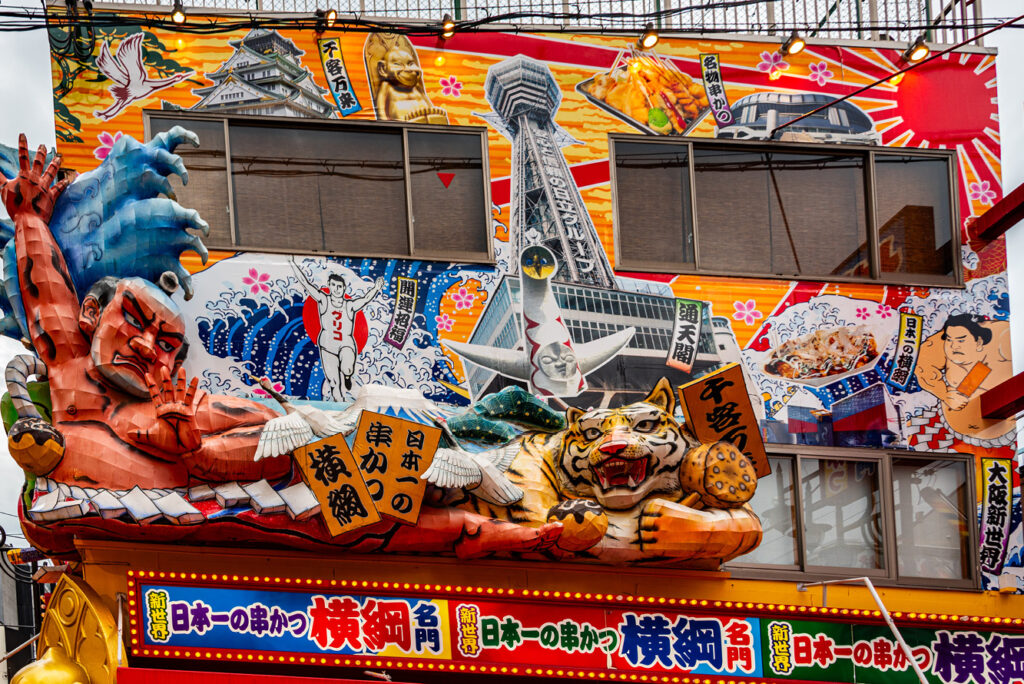
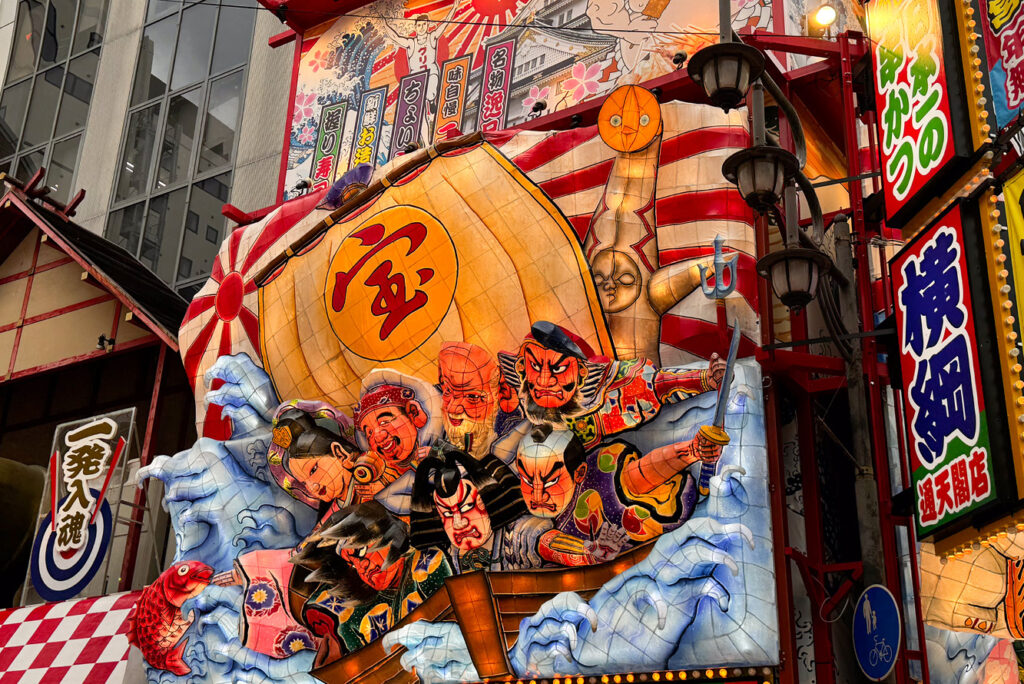
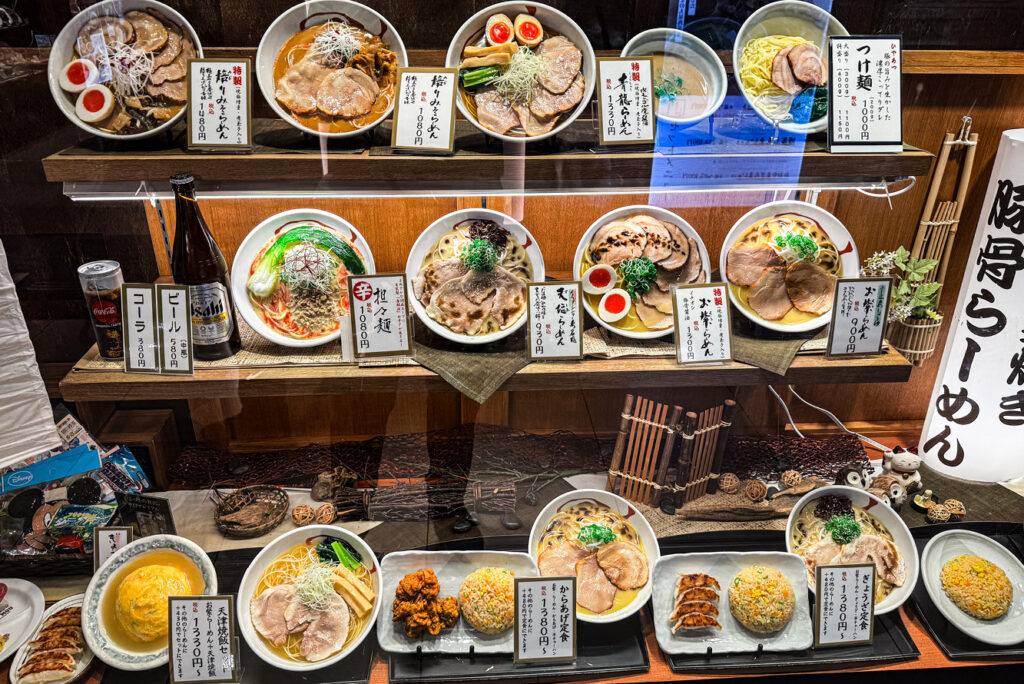
The culture’s creative sensibilities and appreciation of nature permeate all aspects of life.
Design elements of Japan’s ancient and modern buildings, furnishings, ornamental and decorative arts, breathtaking garden landscapes, and even prescribed rituals like the formal tea ceremony express the people’s spiritual roots and homage to nature.
Many of the more sophisticated aspects of the country’s culture were further developed during the Edo period of isolation, with its inward focus on society. During those years, people directed their artistic senses on the aesthetic qualities of objects and actions in everyday life, developing the geisha tradition, kabuki and puppet theaters, the art of creating decorative kimonos, crafting Japanese porcelain, and perfecting a prized tradition, wood block printing.
We spent several nights in ryokans, smaller Japanese inns, providing the exposure to the art and style of traditional living quarters.
Two ryokans had sliding shoji walls made of a parchment-like paper, framed with wooden slats. Tatami mats covered the floors. Minimal, low-to-the-ground furniture that typifies a Japanese home’s interior featured a lacquered dining table that required guests to sit on the floor. I might have been able to sit cross-legged for a short time, but I passed on the opportunity.
Two low divans and a coffee table (a nod to visitor comfort) faced a meditative interior garden. For two nights, we slept on futons on the floor over tatami mats. Can you imagine the midnight challenge to answer nature’s call in the dark?! I’m happy to have tried floor sleeping once.
The ryokans featured onsens, hot mineral baths (104° F) for guests, one for men and one for women, since clothes are not permitted in the baths (neither are tattoos; our traveling companion covered his up with a giant Band Aid). Instructions spelled out a prescribed ritual for preparing to enter and leave the bath. One ryokan featured an indoor mineral bath that extended outside beyond a glass wall into an infinity pool, with majestic mountains as a backdrop. It also had a frigid plunge pool for after a hot soak.
Despite the Japanese’s regimented sensibilities, their playful nature explodes through pop art culture.
Manga (comics and graphic novels) and anime (animated cartoon stories and characters), video games, costume play, and J-Pop music, especially among the under-40 crowd (but not always!) belie the seriousness of Japan’s culture. Visits to Tokyo’s Akihabara section, known as “Electronic City,” as well as Osaka’s Dotombori entertainment district, exposed us to the culture’s fantasy world. Outdoor marquees of moving animals and an unimaginable plethora of television and video characters with sprawling displays of merchandise enjoyably overwhelmed the senses.
Our guide introduced us to buildings with floors of games in Akihabara that excited the kid in me. Of course I plunked down yen to try my skills! I watched a man play a game with his feet as he danced to music standing on an electronic platform, while another couple beat on drums in time to music to kill the enemies popping up on the screen. And these games are not just for kids. Adults stood in front of game machines intently fighting off the cartoon villains.
Then there’s a subculture of mostly teens and young adults who dress up in character styles––waitress outfits, young girls, Goth clothing––known as cosplay (costume play). These “tribes” fascinated me for their creativity and bizarre appearances.
Japan is a relatively easy place to visit
Despite the intimidating language barrier, it appeared that many people working in with the tourist industry know a little English. I suggest learning a few very basic Japanese phrases, like sumimasen (“excuse me “or “I’m sorry”); they’re helpful, and locals appreciated my awkward attempts, even if they smiled at my pronunciation. In transportation hubs, the names of Japanese places and basic signage appear in Roman script, so we could figure out train and subway lines we needed to take.
Our tech-savvy traveling companions during the first half of the trip taught us the camera function on Google Translate, so we never accidentally ordered sea urchin from a non-English menu. And occasionally, eateries had English menus.
Speaking of food, street offerings are plentiful and safe to eat. Try yakitori pork skewers, fried chicken (the best!), vegetarian and tofu dishes, and of course, the national favorite, fish and shellfish. Sushi and sashimi fans will find a cornucopia of seafood delights. For meat eaters, you’ll find heaven at wagyu beef restaurants, a melt-in-your-mouth delectable treat that we cooked ourselves over a small personal grill, Korean-style, at our table.
A trip to Japan is well worth the grueling flight. If you can swing it, upgrade to Economy Plus seats for the extra seat width and legroom. Plan your trip for a minimum two full weeks, or more, if possible. Japan’s offerings will thrill you.
In addition to the requisite guidebooks, for those who want to get a real inside look at Japan’s “cool” culture, I highly recommend A Geek in Japan: Discovering the Land of Manga, Anime, Zen, and Tea Ceremony by Hector Garcia. I learned more about how Japan’s society works than guidebook could tell me. But you’ll still need those guidebooks for practical information.
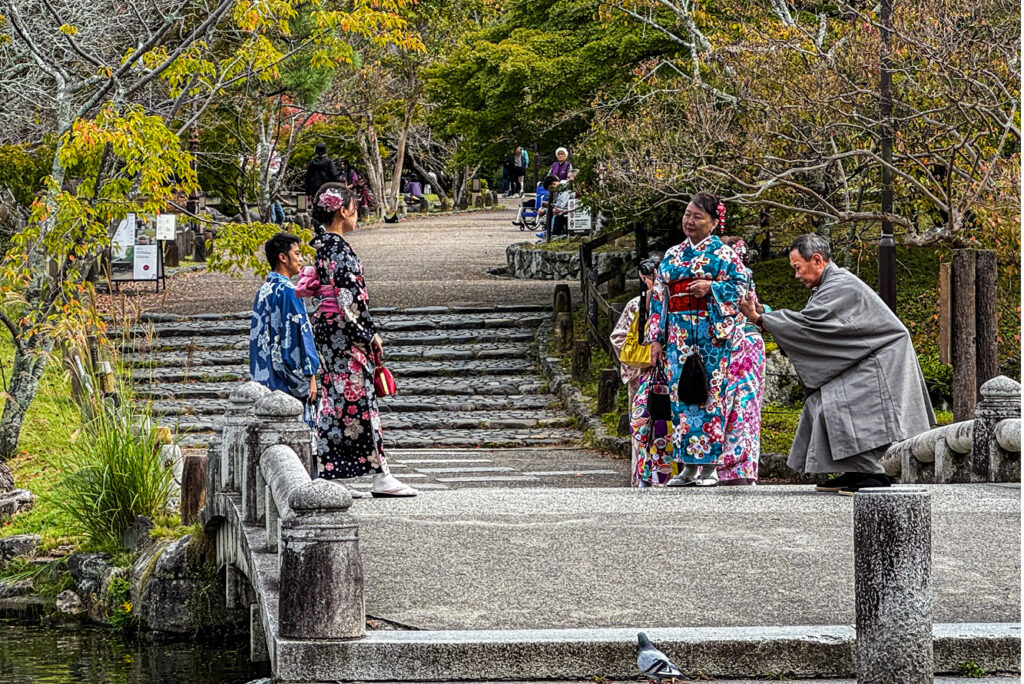
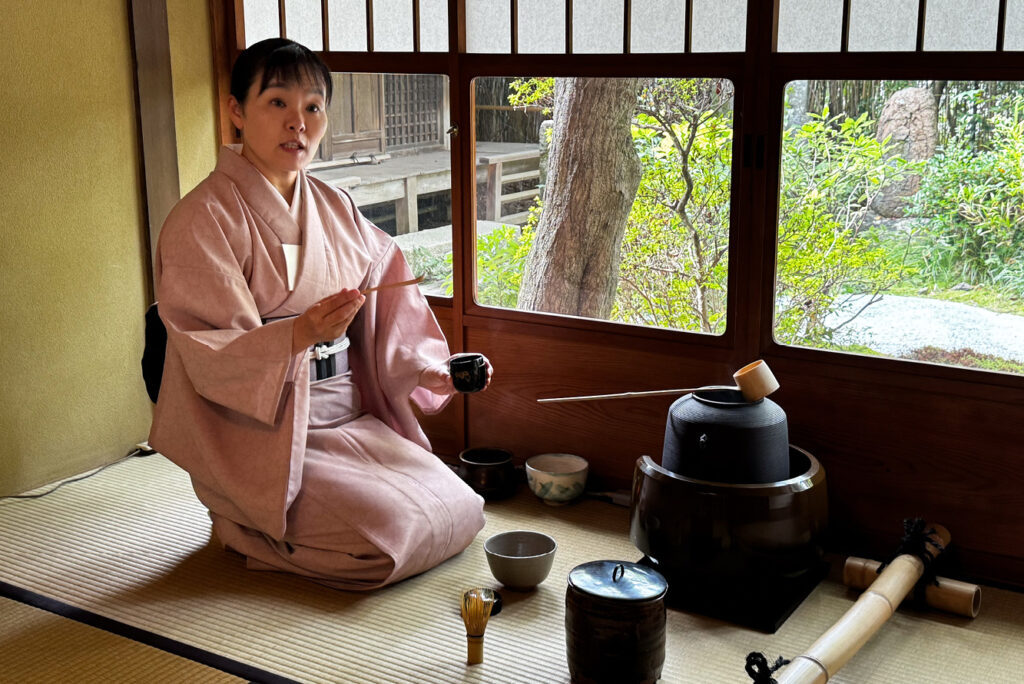
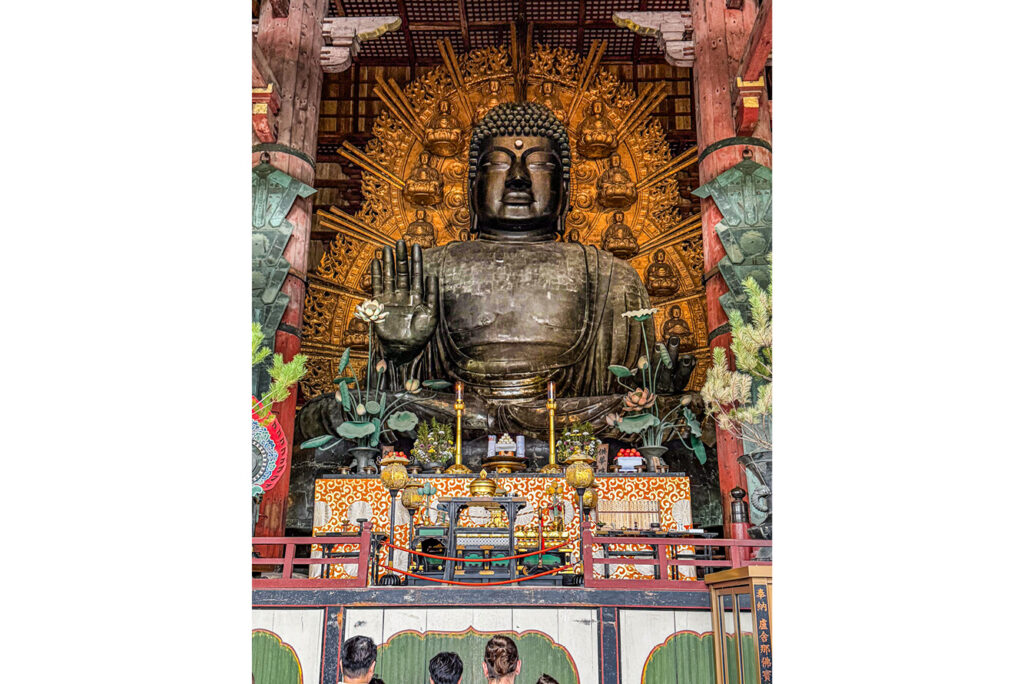
If You Go
GETTING THERE:
Most major airlines fly to the two largest international airports:
- Tokyo-Haneda (HND) ––closest to Tokyo center, with more and cheaper public and private transportation options into the city. Haneda is the domestic airport hub for connecting domestic flights to destinations around the country.
- Tokyo-Narita (NRT)––Japan’s largest airport, offering a broader range of international flights, but with a longer travel time into Tokyo. Traveling from the west coast of the United States, some of the cheapest flights to Tokyo travel to Narita.
GETTING TO CENTRAL TOKYO FROM HANEDA:
- Tokyo Monorail: popular option that’s a balance of speed, convenience, and affordability. A one-way trip to Hamamatsucho Station costs about ¥470–¥520 ($4–5). The monorail is covered by the Japan Rail Pass.
- Keikyu Line: a direct line to Tokyo, including popular central Tokyo neighborhoods
- Bus: cover most popular locations in the city, but not as frequent as the trains
- Taxi: relatively expensive option, with fares to central Tokyo costing between ¥6,000 ($40) and ¥11,000 ($70), depending on the destination neighborhood.
TRAVEL AROUND TOKYO:
- Subway: An extensive, inexpensive, clean, timely system takes travelers to all neighborhoods. Purchase a SUICA or PASMO pre-paid card to use on subways and on most train lines outside Tokyo (but not on the bullet trains). I kept my virtual card in my Apple Wallet on my phone, loaded it up with yen from my checking account when it ran low. SUICA can also be used in convenience stores to pay for anything.
- Uber/Taxi: Uber operates in Japan through the app and is connected to the taxi system. It’s also easy to hail taxis on the street.
TRAIN TRAVEL THROUGHOUT JAPAN (one of the world’s most extensive train systems)
- About 70 percent of Japan’s railway network is operated by the Japan Railways (JR), while the rest is served by dozens of other private railway companies, especially in and around metropolitan areas.
- See Japan-guide.com or information on how to ride the trains, buy tickets, and check timetables.

